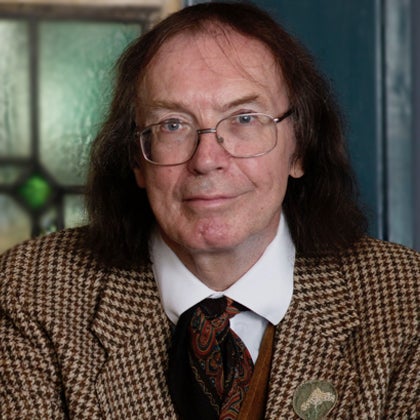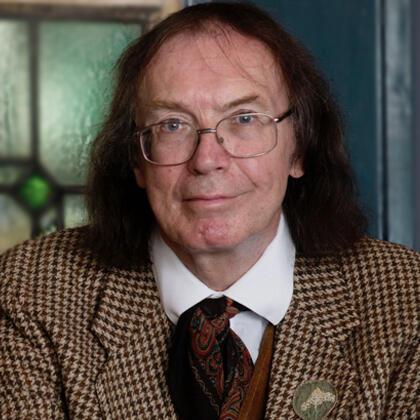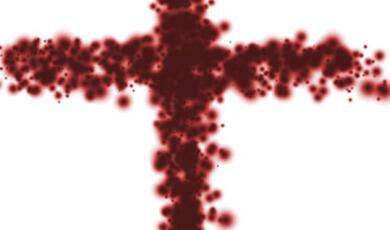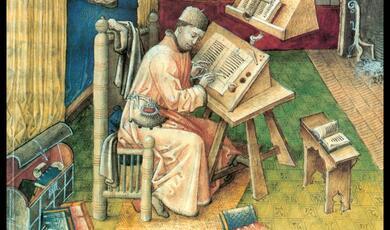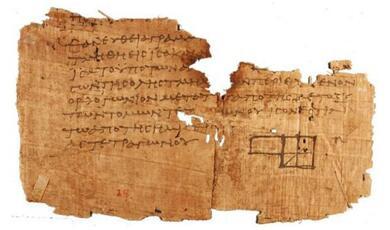Modern Druids
Share
- Details
- Text
- Audio
- Downloads
- Extra Reading
The ancient Druids have long represented some of the most striking and controversial figures in ancient and medieval literature.
In this lecture, we look at the many different ways they have inspired the modern imagination, both as heroic ancestors and demonic villains against whom civilisation can be defined. We trace the appearance of different kinds of Druidry as a part of Paganism, to suggest what the particular contribution of that Druidry to modern culture may be.
Download Text
Modern Druids
Professor Ronald Hutton
2 April 2025
We know almost certainly nothing about the ancient Druids, but a lot about the modern kind, and the way in which images of ancient Druids have inspired the modern British imagination. No less than eight different kinds of Druid have featured in that, and sometimes been recreated in reality, since 1500. The first is the Nationalist Druid, a patriot who defends the nation while representing its piety and wisdom and its link with the past. This drew on ancient representations of Druids as leaders of resistance to Roman invasion, and became important in the early modern period as emerging European nations turned to classical texts to underpin their identities. It became especially useful to the eighteenth-century British, as a common primeval figure to bond the different peoples of the new British superstate together. Georgian writers accordingly hailed Druids as noble and inspiring ancestors.By 1800, however, it was the Welsh who were claiming them especially for their own, as the Welsh were the last remnant of the ancient British, and that identification has remained strong ever since.
The second kind is the Confessional Druid, meaning one who is used to justify the form of religion professed by a modern person. This tapped into a deep need for many British Christians between the seventeenth and nineteenth centuries, to use the Druids as means of transmitting the revealed religion of Noah or Abraham to Britain and preparing the British for the Christian message. The most important individual to do this was the Georgian clergyman William Stukeley, who tried to make them the prophets of the Church of England and in his efforts to prove this founded the discipline of field archaeology. The third kind of modern Druid is the Green one, based on Roman writers who associated the ancient Druids with natural places, and especially woods. This appealed strongly to the Romantic Movement’s veneration of nature as an antidote to civilization, urbanization and industrialization. Eighteenth-century poets and playwrights had Druids accordingly meet in glades and on mountains, and commune with the wisdom of the natural world. This idea lingered among lovers of wild places all through the nineteenth and twentieth centuries, and prepared the Druids to be new ecological heroes, and Druidry a revived pagan religion, by the end of the twentieth century.
The fourth kind of modern Druid is the Demonic one, a familiar character from Greek and Roman sources which depicted the ancient Druids as tyrants who thrived on ignorance, superstition and fear, burned human victims alive in wicker cages and stabbed them to tell the future from their death throes or entrails. This variety was always popular with intolerant Christians, who coupled the classical texts with Old Testament invectives against human sacrifice and idol worship. It dwindled in the Georgian period when the patriotic and green Druids were more popular, only to return big-time under the Victorians. These found the Demonic Druid especially amenable to the new narratives of imperialism (to conquer, convert and civilize traditional peoples), progress of humanity (from bad to good), evangelical Christian revivalism and Gothic fiction.The image is very much alive today.
The fifth Druid is the Masonic. The Georgian period was a golden age of clubs and societies, and the most prestigious were modelled on Freemasonry, with closed societies heavy in initiation and other rituals, and claims of deep antiquity. Given the Georgian admiration for Druids, it was inevitable that some would embrace a Druid identity, and the most successful of these was founded by a London builder called Henry Hurle in 1781. Called the Ancient Order of Druids, it was intended to give working men the chance to develop performing arts such as music and poetry. It had spread across the nation by 1820. In 1833 it split into two rival orders over the issue of whether it should also function as an insurance society for poorer members. Both organizations, however, then proved huge successes and covered the English-speaking world. They only declined in the twentieth century as their functions became obsolete.
The Theosophical Druid is the sixth variety, and appeared in the 1910s, with the Order of the Universal Bond. This was an esoteric, initiatory group, devoted to the project of the international Theosophical Society, founded in the 1870s, to recover ancient and mystical wisdom from all the world’s great religions and philosophies. It accordingly mixed together elements of those with the Druid name, robes and staves. It became the first group of Druids to hold ceremonies at Stonehenge, and did so for most of the twentieth century.
From the Theosophical Druid came the New Age Druid, as another order, that of Bards, Ovates and Druids, split off from the Universal Bond in 1964. It was refounded in the 1980s, using a correspondence course to foster personal growth through poetry, teachings and exercises. It was open to all religions, like the Universal Bond and Ancient Order of Druids, and is now the largest Druid order in the world, with around 40,000 members. Its aim is to reunite humans with the natural world and their own true selves, and so to heal the disorientation implicit for many in an urbanized and atomized social existence. As such it has made a notable contribution to modern spirituality.
The final kind of Druid to feature in modern Britain is the Counter-Cultural, who arose out of the hippie movement of the late twentieth century, and specifically from one of its most prominent public manifestations, the Stonehenge Festival. When this was banned in 1985, those attending lost their clergy, the Order of the Universal Bond and their temple, Stonehenge itself. Many who had come to feel that both had represented their religion formed new Druid orders, to provide rites for themselves. All were overtly Pagan. The largest and most prominent was the Loyal Arthurian Warband led by Arthur Pendragon. It campaigned for civil liberties and the preservation of the countryside, drawing on a long British tradition of working-class protest using fancy dress and fancy titles. It also however had a mystical element, founded on a sense of an organic relationship with the land and with common law. It, and Arthur, are still active.
At the present day three main mages of the Druid coexist, both based on ancient precedents. One is as a teacher, healer, priest and maker of peace between tribes. The second is as a tyrannical barbarian priest cowing an ignorant populace with human sacrifice. The third is as a leader of opposition to invading or despotic powers, defending land and people. All have made, in the last thirty years, distinctive contributions to British culture and popular politics. This is an impressive achievement, showing how figures from the remote past can operate creatively in late modernity.
© Professor Ronald Hutton 2024/5
References and Further Reading
Hutton, Ronald, The Druids. 2007.
Hutton, Ronald, Blood and Mistletoe: The History of the Druids in Britain. 2009.
White, Ethan Doyle and Jonathan Woolley, eds., Modern Religious Druidry. 2024.
References and Further Reading
Hutton, Ronald, The Druids. 2007.
Hutton, Ronald, Blood and Mistletoe: The History of the Druids in Britain. 2009.
White, Ethan Doyle and Jonathan Woolley, eds., Modern Religious Druidry. 2024.
Part of:
This event was on Wed, 02 Apr 2025
Support Gresham
Gresham College has offered an outstanding education to the public free of charge for over 400 years. Today, Gresham College plays an important role in fostering a love of learning and a greater understanding of ourselves and the world around us. Your donation will help to widen our reach and to broaden our audience, allowing more people to benefit from a high-quality education from some of the brightest minds.


 Login
Login
